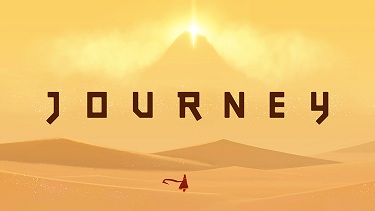Rated E for Everyone; Reviewed on PS3
The debate as to whether video games can be “art” is worth no more time than any of the multitude of similar debates that raged in the past. Popular music, movies, comics, animation – essentially all new mediums – have been accused initially of lacking some quality that raises them to the level of “art”. The debate is worthless because the answer is always the same: yes, they can be art but most often aren’t.
(The fascination for me on this topic is that film critics often incite this ridiculous conversation. People who can see plainly that “The Seven Samurai” [IMDB] is art and “Mega Piranha” [IMDB] is not but are wholly unable to see that parallel in other fields. Baffling.)
ThatGameCompany produces fantastic pieces of art. Only the most myopic, unreasonable, dead-donkey-stubborn people would argue against that statement. Some might consider them the lone exception to the rule, others just the most obvious example of a universal truth about gaming as a medium but honest people must admit that calling their work “art” is appropriate.
“Journey” creates something of a benchmark for the company as this is the most traditional game they’ve produced to date. Their earlier releases – PSN exclusives “Flow” and “Flower” and the PC-only student project “Cloud” – are all sublime, brilliant games. However, they were all also highly experimental and minimalistic and generated some vocal criticism amongst certain minority segments of gamers. Even those that fawned over the games had to admit that the critics calling them “interactive screen savers” or “trumped-up tech demos” had at least some merit while rightfully responding that those critics were clearly missing the point.
Where “Flow” had no story to speak of “Flower” featured an emotionally draining narrative thread rather than a true story. “Journey” shares this with “Flower” but also provides much more cohesive progression and a somewhat optional, but impressive, back-story told through the use of animated hieroglyphs. With the exception of the title screens “Journey” is wordless and nearly every point of the story is open to rather vast interpretation. Most of the developers energy was spent creating the specific moods for each segment of the journey and the actual story is somewhat secondary to that.
You must reach the mountain in the distance, across a vast desert. That’s your only goal. While much was made of the desert sequences in “Uncharted 3” [My Review] they seem sterile and primitive compared to the flowing, shifting sand of “Journey”. Your cloth avatar can slide down dune-faces or leap into a roll causing a rippling wake of sand. The environment is utterly beautiful and meaningfully desolate as you pass fields of what can only be grave markers. Later, as you gain the ability to fly (with a freedom of movement reminiscent of, but subtly different from, “Flower”) it provides an excellent change of pace before the emotionally grueling end-game.
As you progress, many traditional video-game tropes will be visited and almost all will seem new and exciting. There are segments where you must work forward against gusting wind and others where you must stay out of the searching lights. There are exhilarating moments sliding down slopes, tense games of hide-and-seek with monolithic guardians, and haunting excursions into ancient, crumbling ruins. Overall the challenge of the game is minimal – even novice players should be able to complete their journeys handily – but this is a not a game to be played for the challenge.
Adding to the experience is the possible addition of an anonymous (only after the journey is complete are the other players revealed) companion with whom you can communicate only via a few chirps and whistles and your dance-like body motion. Companions can assist each other somewhat by recharging their flight capabilities, but not to the point of actually altering the difficulty. As the game progresses and you become weaker, it’s surprising how emotionally reliant you become on these mute fellowships. Like “Uncharted 3” but, again, even more effectively, there are moments where you will feel the exhaustion of your character on a deep, primitive level and having somebody else to share those moments changes the dynamics dramatically.
The game is admittedly short – a complete journey takes two, not more than three, hours. You can play multiple times, of course, looking for the hidden tableau and to work towards the trophies, but even the most dedicated player should be able to see and do everything within 5-to-7 hours. While I found the experience well-worth the $15 asking price, I can understand those that may balk when much more expansive games are available for the same price or lower.
I have less trouble understanding those that chafe at the lack of traditional game elements. Those that find the game “dull” or too “simplistic”. HUDs, levels, skills, ammo, health and countless other game mechanics are all in place to simulate the development, growth and direction that “Journey” provides so completely and at such a profound level with none of them. Isaac Asimov once said (I’m paraphrasing) that he was only interested in arguing with reasonable people and followed that a useful definition of “reasonable people” was anybody that read his books. Something similar is at work here: people who can’t appreciate “Journey” may not be worth talking to.

